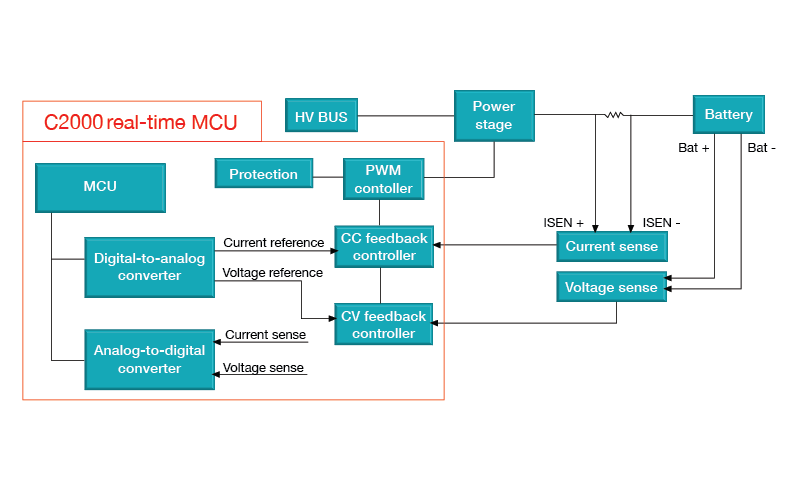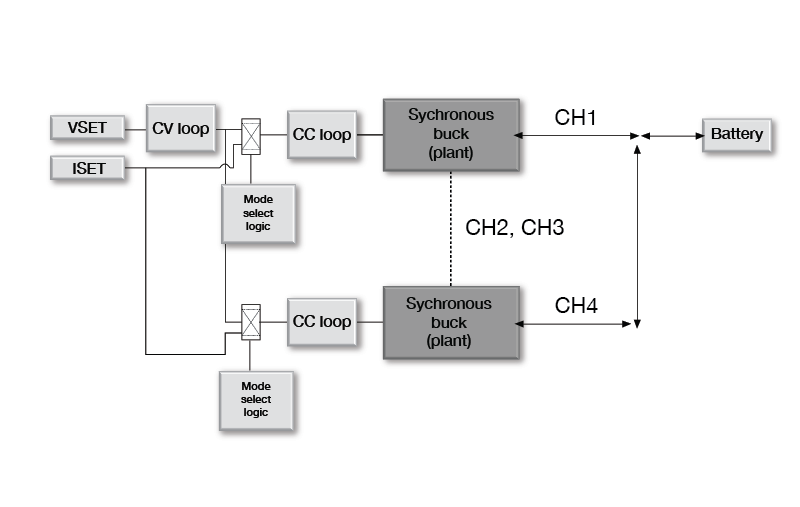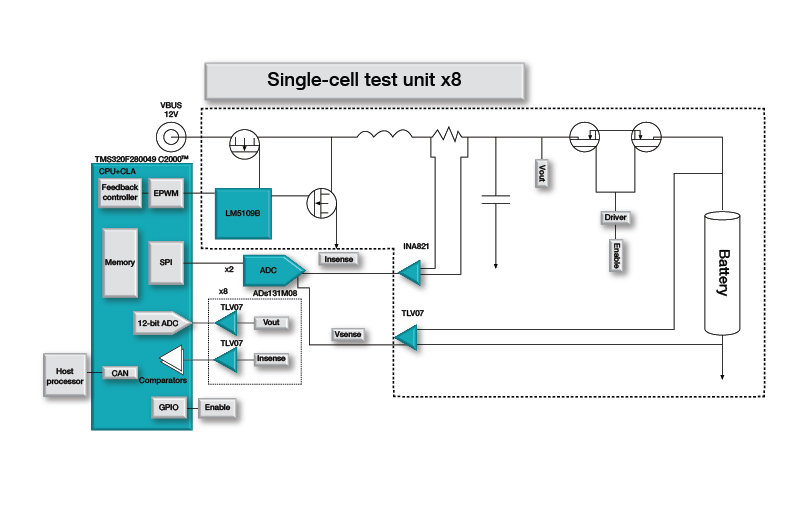SSZT232 november 2020 ADS131M08 , INA821 , TLV07 , TMS320F280049
With lithium-ion batteries found in both small electronic devices and much larger applications such as electric vehicles and electricity grids, they naturally span a wide range of sizes, voltages and form factors. But this breadth means that battery manufacturers have to buy and maintain testing solutions for each battery type, and the associated capital investment becomes significant, directly contributing as much as 20% to the final cost of the batteries.
There’s a clear need for a cost-effective, multirange test solution that can handle a broader range of battery voltages, capacities and physical sizes. This article describes the benefits of a digital control loop battery tester and includes an example of a flexible and cost-effective battery test design. For an overview on battery testing design challenges, read our white paper, "Designing an Accurate, Multifunction Lithium-Ion Battery-Testing Solution."
Benefits of a digital control loop
 Figure 1 Battery tester block diagram
Figure 1 Battery tester block diagramIn the digital implementation, the microcontroller (MCU) performs all the functions inside the red box shown in Figure 1. With the C2000™ real-time control MCU, you can generate 16-bit PWM and use its comparators to implement protection algorithms. The MCU uses the ADC output data to implement current and voltage controllers. Because the controllers are in the digital domain, this architecture doesn’t require a precision 16-bit DAC. A 12-bit on-chip ADC can achieve a control accuracy less than ±0.05%, which is sufficient for cost-optimized battery test systems. However, the implementation requires an external 16-bit precision in the feedback to achieve a control accuracy better than ±0.01%. A digital solution easily achieves flexibility with accuracy; performance and cost differences will depend only on whether you choose to use an external 16-bit ADC or internal 12-bit ADC in the feedback. The efficient use of the MCU in this implementation results in more than 30% savings in the bill of materials.
| Multiple voltages, capacities and sizes. One reference design. | |

|
Use our single, flexible design to test a broad range of battery voltages, capacities and battery sizes. |
Today’s test equipment is designed for a specific battery type. Larger batteries require higher amounts of current and thus a battery tester with multiple channels connected in parallel. But if a battery manufacturer is producing smaller batteries with lower current requirements, they typically use the testers specifically optimized for lower current levels, while the high-current battery testers remain idle. Having a tester capable of testing both smaller and larger batteries reduces this redundancy and helps bring down the overall cost of battery production. A digital control loop offers the flexibility to test both smaller and larger batteries in software, whereas an analog solution requires a hardware change.
With improvements in battery technology, battery producers are demanding new capabilities and test methodologies. Having the control loop in software makes it easier for test equipment manufacturers to provide additional test capabilities.
Designing a multirange battery tester
 Figure 2 Feedback controller in a multiphase configuration
Figure 2 Feedback controller in a multiphase configurationFigure 3 is a block diagram of the reference design. The TMS320F280049 MCU can control up to 8 independent channels. It generates a high-resolution 16-bit PWM for a synchronous buck power stage and performs subroutines for current and voltage control loops. The INA821 instrumentation amplifier senses the current and the TLV07 operational amplifier senses the voltage. Current and voltage signals are converted to digital data by both the external ADS131M08 ADC and the C2000 on-chip ADC. Having the 16-bit ADC in the feedback achieves a control accuracy better than ±0.01%. For cost-optimized systems, you can eliminate the ADS131M08 from the feedback and use the on-chip 12-bit ADC instead to achieve a control accuracy less than ±0.05%
Implementing a multifeedback controller achieves a smooth constant-current to constant-voltage transition where the inner loop is always in constant-current mode. Upon the detection of a constant-voltage-mode condition, the constant-voltage loop output connects to the constant-current loop.
 Figure 3 Digital control loop battery tester
Figure 3 Digital control loop battery tester